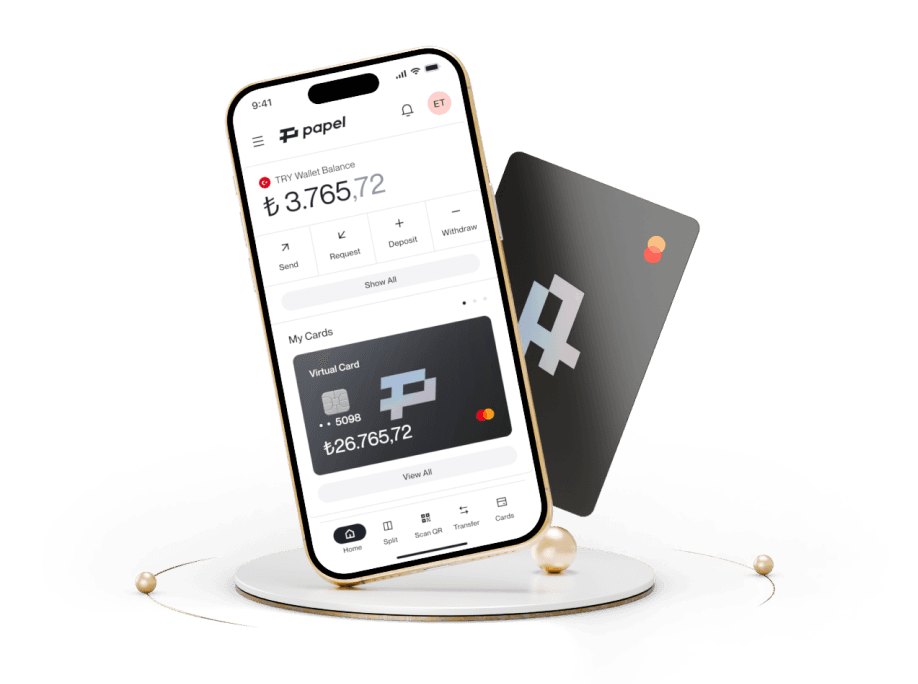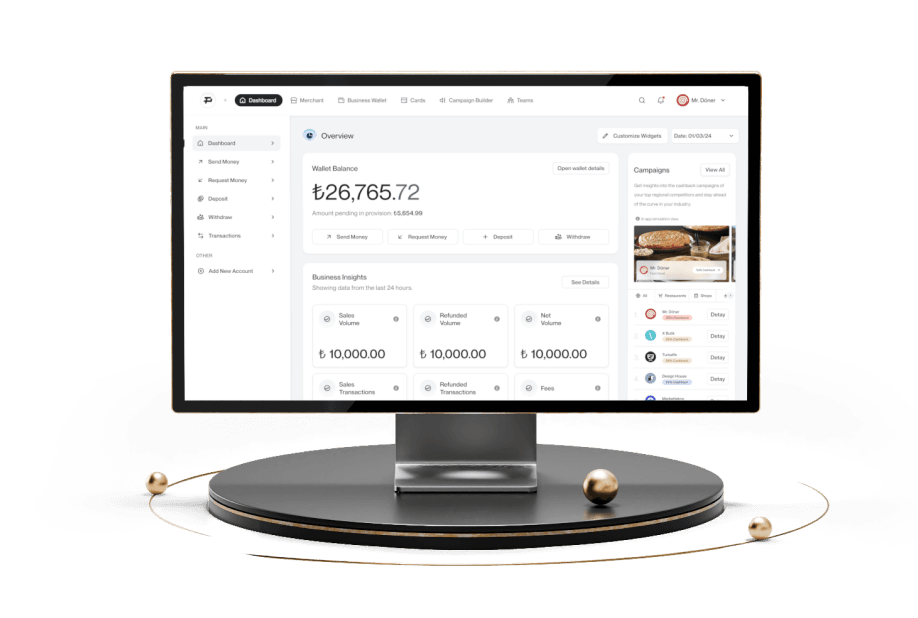Why Is a Credit Card Blocked? How Can It Be Lifted?
In our daily lives, we use credit cards for everything from shopping to paying bills, but they can sometimes be blocked for various reasons. Facing a credit card block can disrupt our transactions and lead to unexpected financial difficulties. That’s why it’s essential to understand what a credit card block is, when it occurs, how it can be lifted, and what precautions can be taken to prevent such issues. In this Papel Blog article, we explain everything you need to know about credit card blocks step by step and share detailed preventive tips against potential risks.
What is a credit card block?
A credit card block means the card is temporarily or permanently disabled for use due to specific reasons. The block may be initiated either by the cardholder or the bank. While the block is in place, the card cannot be used for purchases, cash withdrawals, or automatic payments. It is usually applied for security reasons or to prevent financial risks. When your card is blocked, contact your bank to determine the cause and learn the necessary steps to unblock it.
Being a conscious credit card user is crucial to avoid difficult situations, including card blocks. We recommend checking out our article on The Most Common Credit Card Mistakes and How to Fix Them and our Guide to Credit Cards, which will help you become a more informed user.
What are the types of blocks?
There are different types of blocks used for various reasons, and each requires a distinct procedure for removal. When your credit card is blocked, contact your bank to obtain detailed information. The types of credit card blocks can be listed as follows:
Security block
A security block is applied by the bank if your card is lost, stolen, or suspected of being used for unauthorized activity. The goal is to prevent any transactions made without the cardholder’s consent.
Legal block
If you fail to meet legal obligations such as tax or loan payments, a legal block may be applied by the bank at the request of relevant authorities. This block can continue until the legal issue is resolved.
Provision block
During the approval process of a card transaction, the amount is temporarily deducted from your available credit and blocked. Once the transaction is completed or canceled, the block is lifted.
PIN block
If the card’s PIN is entered incorrectly multiple times, the card is temporarily blocked for security reasons. You can remove the block by contacting your bank or resetting your PIN via online banking.
Collateral block
In some credit card applications that require a deposit or security, a collateral block is placed. This means an amount equal to the card’s limit is blocked in the bank as a guarantee.

Why do banks apply blocks?
Banks may block your credit card for various reasons, including:
Suspicious transaction algorithms
Banks monitor customers’ spending behavior, and if an unusual transaction occurs, the card may be temporarily blocked to prevent unauthorized use. For example, significant transactions, purchases from different countries, or spending at unusual hours can be flagged as suspicious.
Credit card payment delays
If your credit card payments are overdue for a specific period, the bank may block your card. This usually happens after three months or more of non-payment. Such blocks can affect both card usage and your credit score, so it’s essential to make timely payments.
Lost or stolen card report
If your card is lost or stolen, please report it to the bank immediately so that the card can be blocked to prevent misuse.
Incorrect PIN entry
If the PIN is entered incorrectly three times in a row at an ATM or during a transaction, the card may be temporarily blocked. In this case, the cardholder can contact customer service or use online banking to unblock it.
Legal follow-up and court decisions
If legal obligations such as taxes or loans are not fulfilled, relevant authorities may request a block on your card. These blocks usually continue until the legal issue is resolved.

How to Remove a Credit Card Block?
If your credit card is blocked, the first step is to find out the reason. Since blocks can occur for many reasons as listed above, the steps to follow vary accordingly. Therefore, please get in touch with your bank to obtain accurate information and initiate the necessary process.
If the block is due to security concerns, the bank may request identity verification and reissue the card. For blocks due to delayed payments, the outstanding amount must be paid and confirmed by the bank. In the case of a legal block, the debt must be cleared, and an official document should be provided to the bank. Provision blocks usually clear automatically once the transaction is finalized, but in some cases, a cancellation request to the bank may be required. In short, if you encounter a credit card block, contacting your bank promptly and taking timely action is crucial to resolving the issue.
Things to watch out for during a block
There are a few essential things to keep in mind if your credit card is blocked. First, be aware that automatic payment orders linked to your card may fail due to the block. You may need to track your payments manually or switch to alternative payment methods. For example, you can use other bank cards for daily expenses or assign automatic payments to a different card while your current card is blocked. Staying in close contact with your bank and submitting any required documents promptly will expedite the resolution process. Additionally, managing your spending carefully and regularly reviewing your budget can help prevent financial disruptions. If you follow these tips, you can get through the block with minimal impact on your financial life.
Tips to prevent card blocks
Now that we’ve covered what to do if your card is blocked, let’s look at how to avoid it in the first place. Here are some practical tips to help you prevent a credit card block:
Make your payments on time
The most common cause of a block is unpaid credit card debt. If you pay your credit card bills on time and in full, you’ll significantly reduce the risk of a block. Try to avoid paying only the minimum due and keep track of your payment dates.
Be mindful of your spending habits.
Banks use algorithms to detect unusual or suspicious activity. Large purchases, foreign transactions, or activity at odd hours can trigger a block. To avoid this, try to stay within your usual spending patterns.
Keep your card information secure.
If your card is lost or stolen, call your bank immediately to block it and prevent unauthorized use. But ideally, you should store your card securely and never share your card details with anyone. When shopping online, use only trusted and secure websites to reduce the risk of fraud.
Protect your PIN
Entering your PIN incorrectly multiple times can result in a temporary block. Be cautious when entering your PIN and never share it with anyone else. If you forget it, contact your bank’s customer service to reset it.
Keep your contact information up to date.
Ensure your contact and identity information with the bank is up to date, so they can reach you quickly if there’s an issue with your card. This enables timely action in the event of problems.
This blog post contains general information, not legal, financial, or investment advice. The content is prepared for informational purposes only, and you are advised to seek professional advice for your specific circumstances. The expressions in this article do not carry any binding nature or responsibility and reflect only the author’s evaluation. All your decisions are your responsibility, and Papel Electronic Money and Payment Services Inc. accepts no liability for any consequences arising from them.

